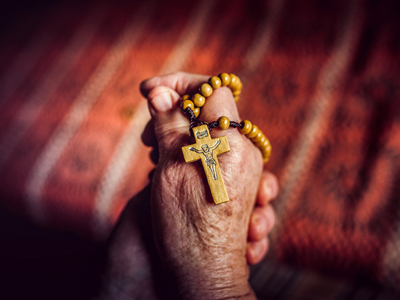
Catholicism - Rituals
This GCSE RE quiz on Catholicism takes a look at rituals. We should distinguish between Rites (the formal words and gestures prescribed for Baptism, and in equivalent manner for the other six Sacraments) and Rituals, which to Catholics mean the book/s in which these Rites are codified. In a broader sense, the term ‘ritual’ is usually used to refer, generally or in specific detail, to formal religious ‘habits’ such as crossing and genuflection ~ in which a posture or gesture contributes extra meaning to the words of the Liturgy.
Rightly or wrongly, Catholics are widely taken to be ritualistically-minded. For instance, by the time a Catholic believer is sitting waiting for the start of Mass, they may well have done three or four things (including saying preparatory prayer/s) that practicants of ‘lower’ denominations would not bother with, but to a Catholic these are important and necessary stages of their churchgoing ‘etiquette’ and certainly not trivial nor dispensible.
Ready for more?
not all...
quizzers. Try to win a coveted spot on our Hall of Fame Page.







